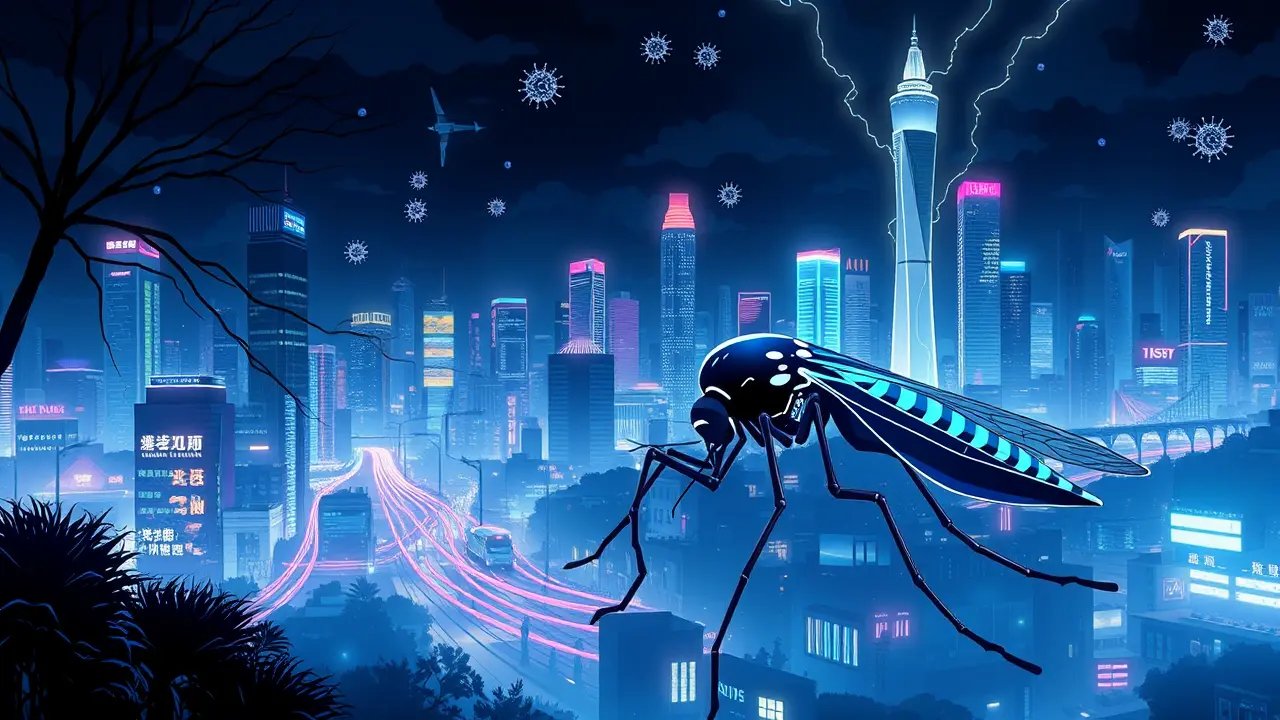Thousands fall ill as mosquito fever explodes across southern China
The humid, sprawling cities of southern China are facing a public health crisis of a scale and ferocity previously unseen, as the worst chikungunya outbreak in the nation's history tightens its grip on Guangdong Province and sends unsettling ripples into neighboring regions. This isn't merely a seasonal nuisance; it is a stark, feverish symptom of a planet in distress, a direct consequence of the complex and dangerous dance between human progress and ecological disruption.The Aedes mosquito, a tiny, striped vector of misery, is the primary agent here, and its burgeoning population is a direct result of our warming climate. Rising temperatures have expanded its viable breeding grounds, while the intense, unpredictable rainfall events, another hallmark of our altered climate, create perfect, ephemeral puddles in everything from discarded tires to the saucers of ornamental plants—a sprawling, decentralized nursery for a winged epidemic.This is compounded by the relentless engine of urbanization; megacities like those in Guangdong, with their dense human populations and vast concrete jungles that inefficiently manage water, create ideal conditions for these insects to thrive in close quarters with millions of potential hosts. It’s a perfect storm, where the heat accelerates the virus's replication within the mosquito, shortening the time between it taking an infected blood meal and becoming infectious itself, a phenomenon known as the extrinsic incubation period.And then there is the accelerant of global travel, a hyper-connected network that can carry an asymptomatic individual from an active outbreak zone in Southeast Asia or Africa to the heart of a susceptible Chinese metropolis in a matter of hours, seeding the virus into a population with little to no prior immunity. The human cost is immense and deeply personal; chikungunya, which translates roughly to 'that which bends up' in the Kimakonde language, is aptly named for the severe, debilitating joint pain that contorts its victims, often lasting for weeks, months, or even years, crippling livelihoods and overwhelming healthcare systems already strained by other endemic diseases like dengue.We have seen this narrative unfold before, from the Zika alarms in the Americas to the relentless global march of dengue, yet our response remains largely reactive, a cycle of spraying insecticides after the fact rather than a proactive, ecological rebalancing. The data pouring in from Guangdong is more than just numbers on a chart; it is a biological warning, a clear signal that our war against these vector-borne diseases is being fought on a shifting battlefield tilted increasingly in the mosquito's favor.To truly combat this requires a fundamental shift—from treating the outbreak to treating the environment itself, investing in sustainable urban planning that eliminates standing water, championing community-based surveillance, and, most critically, addressing the root cause with aggressive climate mitigation policies. The fever exploding across southern China is a fever burning in our global ecosystem, and until we cool the planet and mend our relationship with it, we can only expect these outbreaks to become more frequent, more severe, and more devastating.
It’s quiet here...Start the conversation by leaving the first comment.
© 2025 Outpoll Service LTD. All rights reserved.
